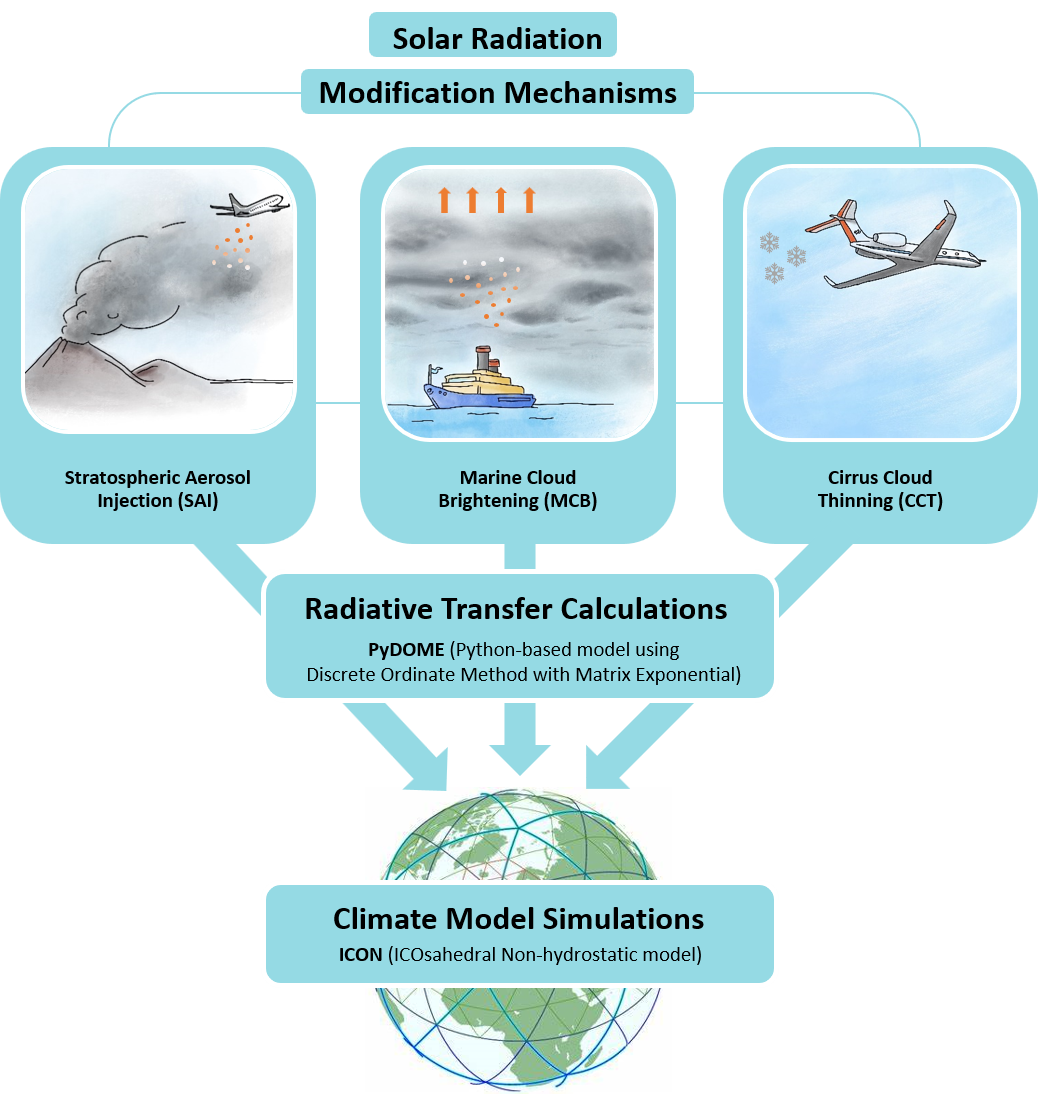Summary
The ACtIon4Cooling project is making use of existing data, algorithms, models and adaptations to propose monitoring capabilities of different Solar Radiation Management (SRM) approaches, including Stratospheric Aerosol Injection (SAI), Marine Cloud Brightening (MCB) and Cirrus Cloud Thinning (CCT). The project is investigating natural analogues, the building of novel datasets and analysing study cases for the assessment of potential SRM deployments. Synergistic measurements of volcanic aerosols, marine clouds affected by ship-track emissions and aviation-relevant cirrus clouds will also be studied.
ACtIon4Cooling is an ESA-funded project of the German Aerospace Center (DLR), National Observatory of Athens (NOA ReACT) and University of Leipzig aiming at indoor research on Solar Radiation Management (SRM).
Background
The project addresses a critical scientific and policy challenge: understanding and quantifying aerosol-cloud interactions (ACI) to reduce uncertainties in climate projections and assess the feasibility, risks, and governance of solar radiation modification (SRM) technologies as a supplementary climate intervention strategy.
ACtIon4Cooling tackles the persistent uncertainties in effective radiative forcing due to aerosol-cloud interactions, particularly those related to aerosol-induced modifications of cloud micro- and macrophysical properties.

Despite decades of research, estimates of total aerosol forcing still vary by over 50%, largely due to limitations in observing and modelling aerosols and their interactions with clouds. Key challenges include insufficient vertical resolution in passive satellite observations, poor characterisation of cloud condensation nuclei (CCN) and ice-nucleating particles (INP), and retrieval dependencies among cloud properties.
Integrated, high-resolution, and vertically-resolved aerosol and cloud measurements, using both passive and active remote sensing, are required to constrain ACI processes. A better understanding of these interactions is essential not only to quantify current climate drivers but also to evaluate the potential of SRM approaches such as stratospheric aerosol injection (SAI), marine cloud brightening (MCB), and cirrus cloud thinning (CCT).
ACtIon4Cooling aims to contribute to the emerging discourse on SRM as a potential emergency or transitional response to rapid climate change, particularly if mitigation efforts fail to meet the Paris Agreement targets. While SRM methods could provide rapid cooling by increasing Earth's albedo, they also pose significant scientific, environmental, and geopolitical risks, including stratospheric ozone depletion, shifts in precipitation patterns, and ethical concerns over governance and deployment. The project seeks to inform responsible SRM research through improved scientific evidence, particularly on the timing, regional effects, and unintended consequences of such interventions.
By advancing the observational and theoretical understanding of ACI, the ACtIon4Cooling supports both climate science and policy. It aims to reduce critical uncertainties in climate modelling, evaluate the physical plausibility and climate impacts of SRM technologies, and provide evidence-based input for governance frameworks on the responsible research and potential deployment of geoengineering solutions.


